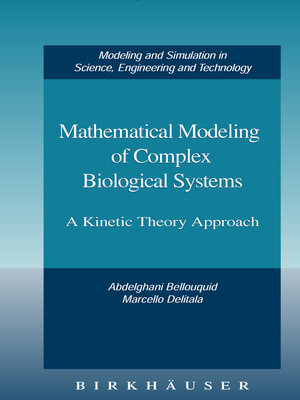Mathematical Modeling of Complex Biological Systems
ebook ∣ A Kinetic Theory Approach · Modeling and Simulation in Science, Engineering and Technology
By Abdelghani Bellouquid

Sign up to save your library
With an OverDrive account, you can save your favorite libraries for at-a-glance information about availability. Find out more about OverDrive accounts.
Find this title in Libby, the library reading app by OverDrive.



Search for a digital library with this title
Title found at these libraries:
| Library Name | Distance |
|---|---|
| Loading... |
ContentsandScienti?cAims The scienti?c community is aware that the great scienti?c revolution of this century will be the mathematical formalization, by methods of applied mathematics, of complex biological systems. A fascinating prospect is that biological sciences will ?nally be supported by rigorous investigation me- ods and tools, similar to what happened in the past two centuries in the case of mechanical and physical sciences. It is not an easy task, considering that new mathematical methods maybeneededtodealwiththeinnercomplexityofbiologicalsystemswhich exhibit features and behaviors very di?erent from those of inert matter. Microscopic entities in biology, say cells in a multicellular system, are characterized by biological functions and the ability to organize their dynamics and interactions with other cells. Indeed, cells organize their dynamics according to the above functions, while classical particles follow deterministic laws of Newtonian mechanics. Cells have a life according to a cell cycle which ends up with a programmed death. The dialogue among cells can modify their behavior. The activity of cells includes proliferation and/or destructive events which may, in some cases, result in dangerously reproductive events. Finally, a cellular system may move far from eq- librium in physical situations where classical particles generally show a tendency toward equilibrium. An additional source of complexity is that biological systems always need a multiscale approach. Speci?cally, the dynamics of a cell, including its life, are ruled by sub-cellular entities, while most of the phenomena can be e?ectively observed only at the macroscopic scale.







